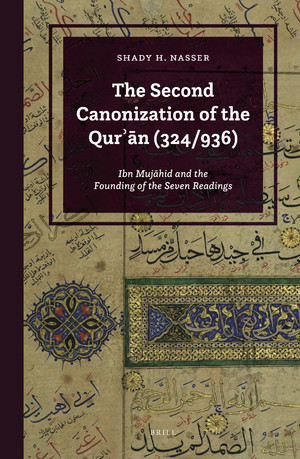Author
Shady H. Nasser, Ph.D. (2011), Harvard University, is assistant professor of classical Arabic at that university. He has published several articles in Qurʾānic studies and classical Arabic literature, including The Transmission of the Variant Readings of the Qurʾān (Brill, 2013).

Presentation
In The Second Canonization of the Qurʾān, Nasser studies the transmission and reception of the Qurʾānic text and its variant readings through the work of Ibn Mujāhid (d. 324/936), the founder of the system of the Seven Eponymous Readings of the Qurʾān. The overarching project aims to track and study the scrupulous revisions the Qurʾān underwent, in its recited, oral form, through the 1,400-year journey towards a final, static, and systematized text.
For the very first time, the book offers a complete and detailed documentation of all the variant readings of the Qurʾān as recorded by Ibn Mujāhid. A comprehensive audio recording accompanies the book, with more than 5,000 audio files of Qurʾānic recitations of variant readings.
contents
Acknowledgements
Foreword
Chapter 1: Preliminaries. The Second Canonization of the Qurʾān
Chapter 2: Survival of the fittest
2.1: The Irregular readings of the Canonical Readings
2.2: Sixty-Six Problematic Transmissions in Ibn Mujāhid’s Kitāb al-Sabʿa
Chapter 3: Ḥadīth and Qurʾān rijāl criticism
Chapter 4: Orality revisited. The Written Transmission of Qirāʾāt
4.1: The Regional Codices
4.2: Early different forms of Qirāʾāt transmission
Chapter 5: The Nature of the Qurʾānic variants
5.1: Standardization of Arabic and the Qurʾānic text through the principles of Qurʾānic recitation (uṣūl al-Qirāʾa)
5.2: The individual variants (farsh) of the Qurʾān
Conclusion and future research
Bibliography
